This is part 2 of a two-part series, detailing the Dos Pueblos Golf Links project in Santa Barbara. The course was routed by Bill Coore and Ben Crenshaw in the early 90’s, but faced obstacles throughout the permitting process. Despite attempting to address and accommodate for every objection to the project, after nearly a decade of battle the course was finally done in by environmental concerns. Read the full story of the course’s past in part 1:
The Lost Pebble Beach of Coore & Crenshaw, Part 1
Last year I was introduced to the Dos Pueblos Golf Links project, an early-90’s plan for a Coore & Crenshaw course along the Santa Barbara coastline that ultimately was never built. I was presented with the full, comprehensive plans and drawings for the site, and tasked with bringing the course to life digitally. As with any good project, my first step …
Can Dos Pueblos still happen?
Since the PGA 2K course designer has been around (since 2014, previously under the name The Golf Club), one of my favorite things to use the tool for has been to take real life courses or properties and visualize the possibilities for it. The first idea that I explored was turning my hometown 27-holer into an 18-hole Raynor/MacDonald-style course. I enjoyed the project so much that I kept going with other ideas. Funny things started happening.
I created a fictional restoration of Donald Ross’ work at Detroit Golf Club, called The Motown Club, 1916. Then a few years later, a Ross restoration by architect Tyler Rae was announced. Total fluke.
My next project was to rebuild the lost Tom Doak course, High Pointe. High Pointe, which closed in 2009, was Tom Doak’s first 18-hole design. As I finished bringing the course back to life, it was announced that High Pointe was coming back, albeit as an ultra-private club, with new holes mixed in with 5-6 of the old holes. A fun story that I had nothing to do with.
Lastly, I decided to do another Ross restoration, this time on Brainerd GC in Chattanooga, once affectionately known as Chattanooga Muni. Nothing has happened with Brainerd in real life, proving that those other two projects were just coincidences. And yet, I’ve received private messages saying some investors are interested in putting together a restoration to the course like the one I portrayed.
So whenever I do these projects, people seem to enjoy seeing and playing the course virtually, and sometimes that’s all that comes of it. And other times, the thing I create comes to life.
I don’t know what is in store for the Dos Pueblos Golf Links property, but it remains undeveloped and in need of rehabilitation. I’m not saying we’ll be playing golf on the Santa Barbara coastline someday. But I’m also not not saying we’ll be playing golf on the Santa Barbara coastline someday.
The Coore & Crenshaw Experience
One of the reasons I was excited to take on the Dos Pueblos design is that it was a rare opportunity. Because no golf holes were ever built, there was no trace in the land of Coore & Crenshaw’s work. And yet the land was never touched from the time they saw it until today. This meant that I could compare the plans that C&C created against what was on the ground. I could see where their famously light touch would be evident, and where they would need to engineer difficult areas of the plot to fit in with the rest of the course. And make no mistake, this property had an abundance of both - areas where golf holes could rest naturally with almost no movement of dirt at all, and greens built in the middle of what used to be barrancas running down to the Pacific Ocean.
I will detail below what I think are some of the most interesting aspects of the property and what C&C have done with it. But first, take a tour of the course yourself with this video. The first 6 minutes take you through a continuous tee-to green-to tee ground level path through the course, which I think really shows how interesting the routing is. With the property essentially having two halves bisected by a railway line - one along the coast and one inland - the routing brings you back and forth from one side to the other multiple times without ever feeling too forced or too long of a commute. Loops of holes 6-7, 10-13, and 16-18 along the water mean there is a ton of variance throughout the round.
The rest of the video will give you a more standard flyover to see each hole more fully.
Highlights
Hole 1 and the driving range occupy the largest, flattest area of the inland property. The first fairway is absolutely enormous, eating up a lot of flat land that would otherwise cause a routing headache. As a dogleg, it allows the golfer to ease into the round by choosing their own path and level of aggression off of the tee. As the hole turns and heads to the green, it also steers your attention towards the Pacific.
The 2nd hole is the first of many shots over a barranca, this as a par-3 to a green that is nestled just above the dropoff. A little bit of earthwork would be necessary to prop up the green, but not too much in the grand scheme of things. And the payoff is one of the best looking holes in the round.
Holes 3-5 are just a masterclass in minimalist routing. None of these holes required much of any work at all, and the 5th hole beautifully uses a small barranca to split a massive fairway and allow for a multitude of different ways to play the hole. The main theme, though, is that if you play safe to the larger fairway on the right, you will be faced with a wedge over the vegetation to a shallow green.
Hole 6 is the first oceanside hole, and features a diagonal drive over what might be the deepest and most intimidating cliff on the course. But other than at the tee boxes, this hole required minimal other work, which is insane for such a dramatic hole.
Like the 6th, the 7th is another short hole utilizing the dramatic coastline terrain, also offers a lot of fairway space, and similarly asks you off the tee to pick how aggressive you want your line to be. What differs here, though, is that the green is located where a barranca currently exists. It required a lot of work to make it playable. What I came up with, from what at first struck me as an odd green shape, is actually one of my favorites at Dos Pueblos. You can easily get close to the green with a driver in the game, but getting out with less than 4 requires a lot of courage with your short game. There is no scoring here without risk.
The 8th hole and 14th hole are side-by-side, a long par-5 and long par-4, respectively, that chew up most of the rest of the inland property. I appreciate that both are still interesting, with the 8th being somewhat of a Coore & Crenshaw “template”, if you will. What’s known as a Credit Card Hole. You can keep making minimum payments, playing out to the right and well away from the bunkers all down the left side, but eventually that bill will come due, in the form of a wedge shot to a green that runs steeply away. The earlier you successfully take on the left side, the better shot you will have into the green.
The 10th hole heads back down to the ocean, with the 10th green perched just above the beach, perhaps the most picturesque out of the 18. It’s the 11th, however, that might be the signature hole. This is another area where a green needed to be heavily engineered to sit where the cliff otherwise falls into the ocean. It’s the Pebble Beach moment of the course, recalling the 7th hole up in Monterrey, yet playing entirely differently with a forced carry. The odd green shape, coupled with the short yardage - playing as short as 90 yards and at a maximum of 118 yards - make it challenging, yet playable, for most levels of golfers.
After crossing back over the tracks to play the 14th hole, the 15th represents the last inland hole before the oceanside finale. It happens to also be one of the most unusual and exciting holes in the routing. A shared fairway with the 2nd hole provides ample short stuff off of the tee, but there are deceivingly few good spots to approach the green from. The fairway crests at about 250 yards from the back tee, and then heads steeply down towards the barranca. A controlled drive can meander down the slope and end up safe, but will result in a downhill lie on the second shot. Playing out to the left offers more room away from the bunkers, but the green, the last of the manufactured surfaces at Dos Pueblos, runs left to right and away from approaches coming from that part of the fairway. The smartest play may be to lay back at the top of the crest, and take on the tough green from a flatter lie.
The final hole is a perfect encapsulation of the round. From the back tee, a forced but manageable carry over a final ravine must be navigated to an absolutely colossal fairway. At 622 yards from the tips, there are countless acres of short grass, inhabiting a space along the coastline that is large enough for this brawny par 5, but likely too narrow to route parallel holes. With so much room to hit, it feels like it could be an easy and uneventful finish to the round. But like the 8th, this is another credit card hole. The green has some tough pin locations which are better approached from along the coastline.
Lessons
As I stated earlier, the fact that the course had been routed but never built, and that the land had never been touched, offered a perfect learning opportunity to see what makes Coore and Crenshaw so special. For me, it became pretty clear once I started working on the details of the course.
It’s the routing.
There are so many decisions here that make so much sense. The 1st and 18th holes occupy large swaths of the least interesting land, getting away from and back to the clubhouse efficiently, while still retaining so many options to play them that they don’t get old. Holes 3-6 required so little movement of dirt. The bunkers all make sense strategically, and yet fit naturally into the land in so many spots. The most artificial parts of the course - the 7th, 11th, and 15th greens - are all huge payoffs, and well worth the effort to build. The pacing of the round is so varied, going back and forth between the ocean half and the inland half without feeling forced. I didn’t even notice until writing this up that the par 70 layout has an unusual three par-5s and five par-3s.
Tipping out at just over 6600 yards, it would never play host to the PGA Tour or a major. As far as video game courses go, it’s not even a remotely difficult course. And yet between the carries over native areas, the views, and the endless options for playing each hole, it would pose a real-life challenge for amateurs, while still being endlessly enjoyable. Not to mention, with so many holes allowing you to choose how aggressive to be off of the tee, it would be an ideal match play course.
So that’s it, I’ve done my part. Now it’s on a developer, the California Coastal Commission, and Bill and Ben to bring it across the finish line. Get it done everyone!

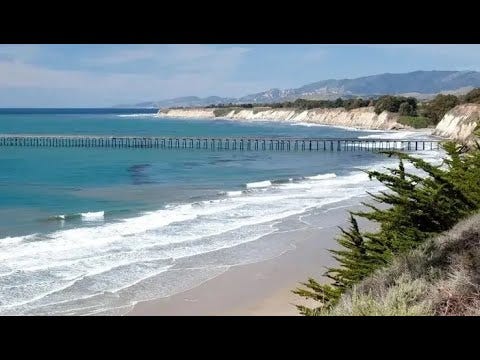


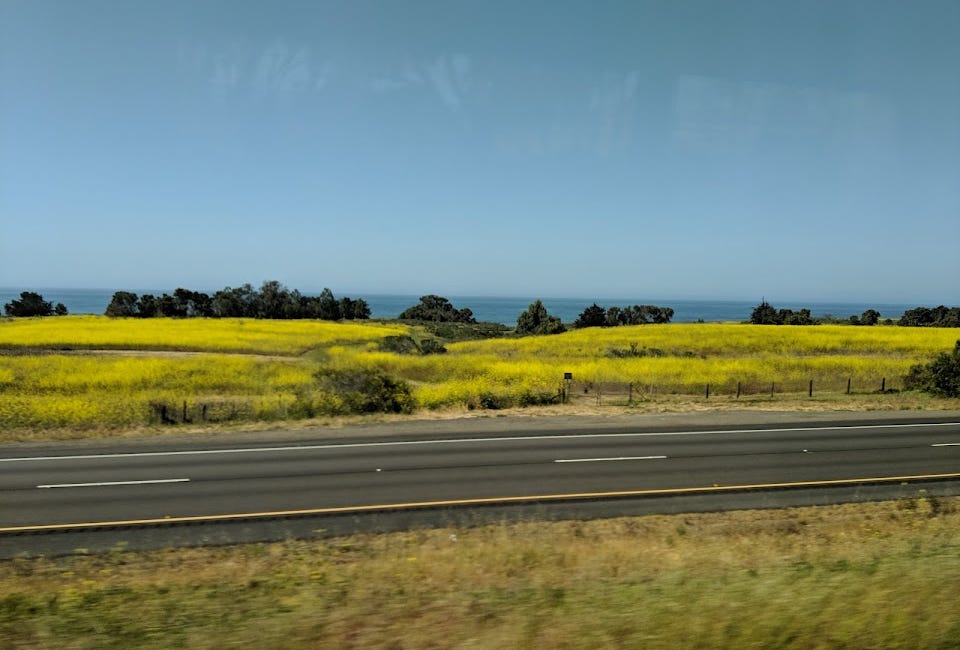
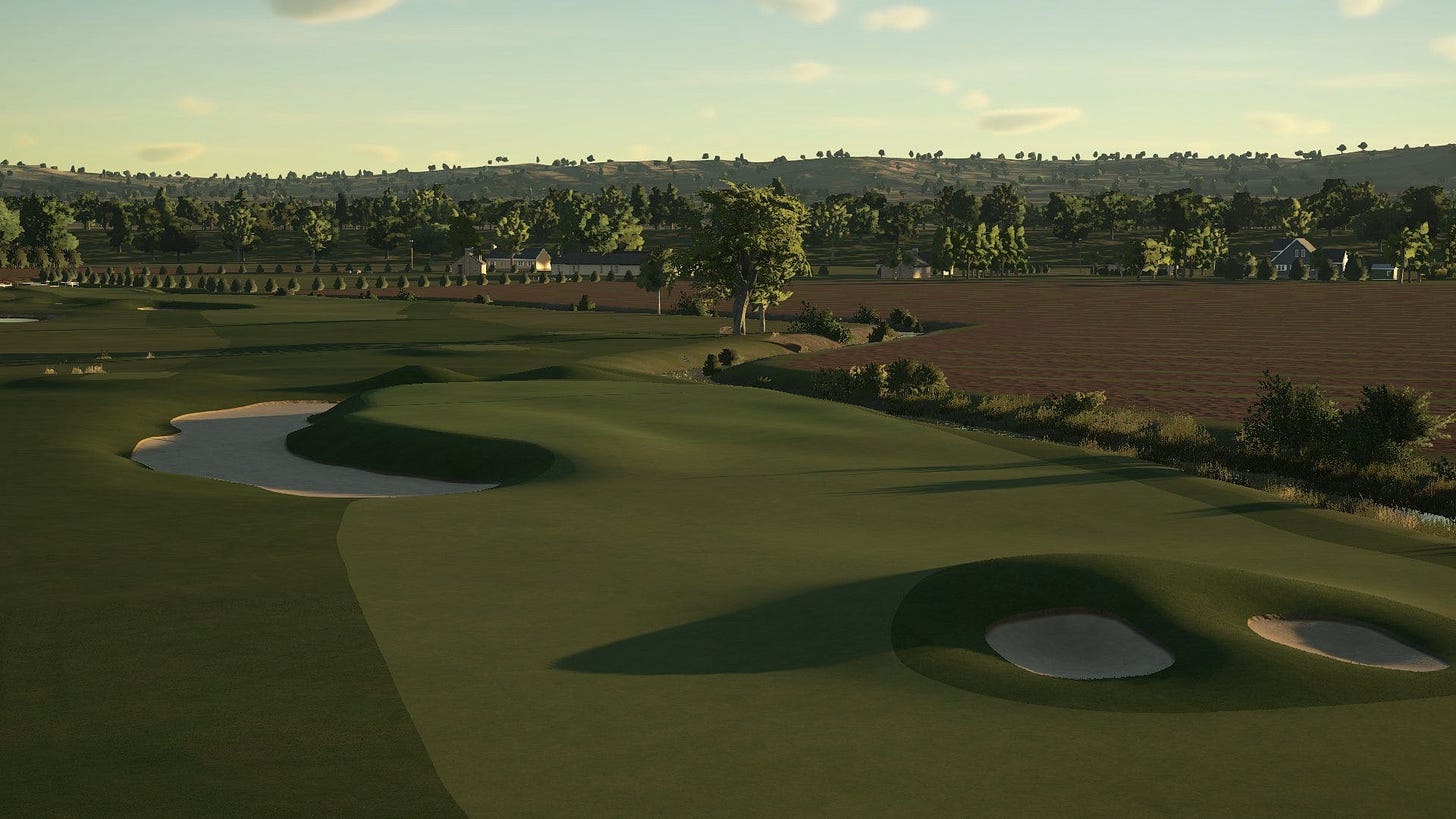
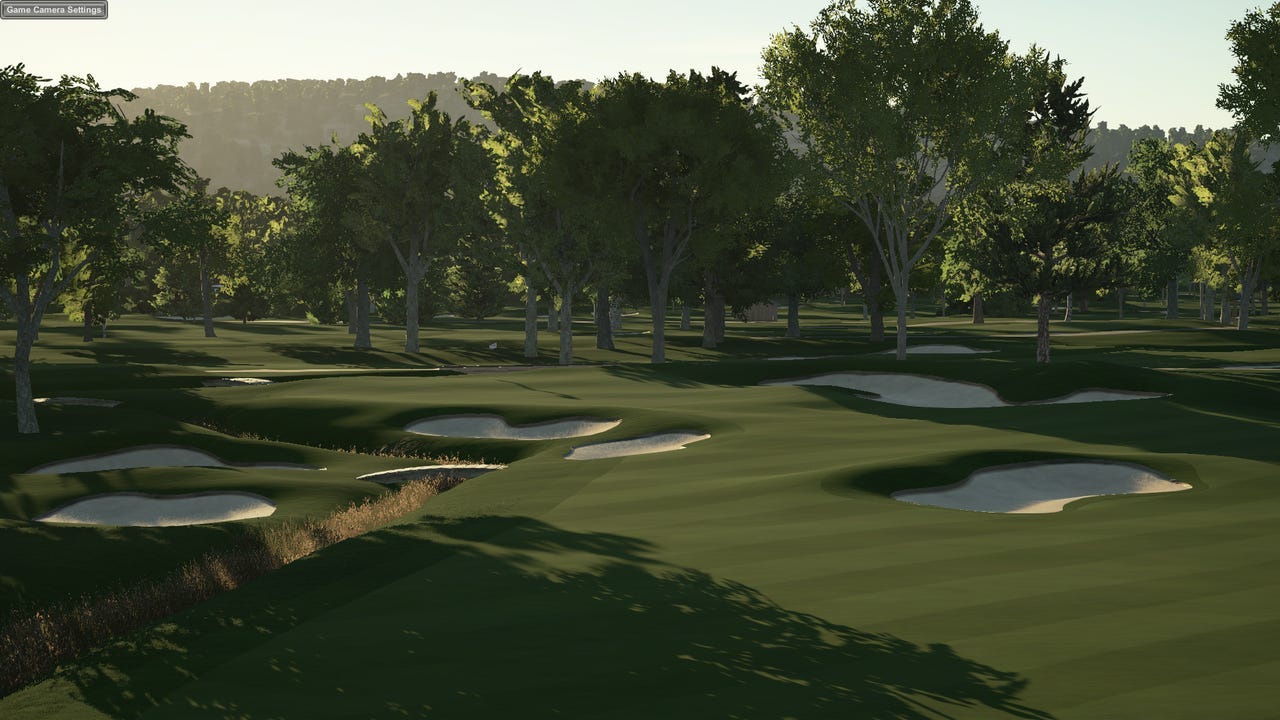
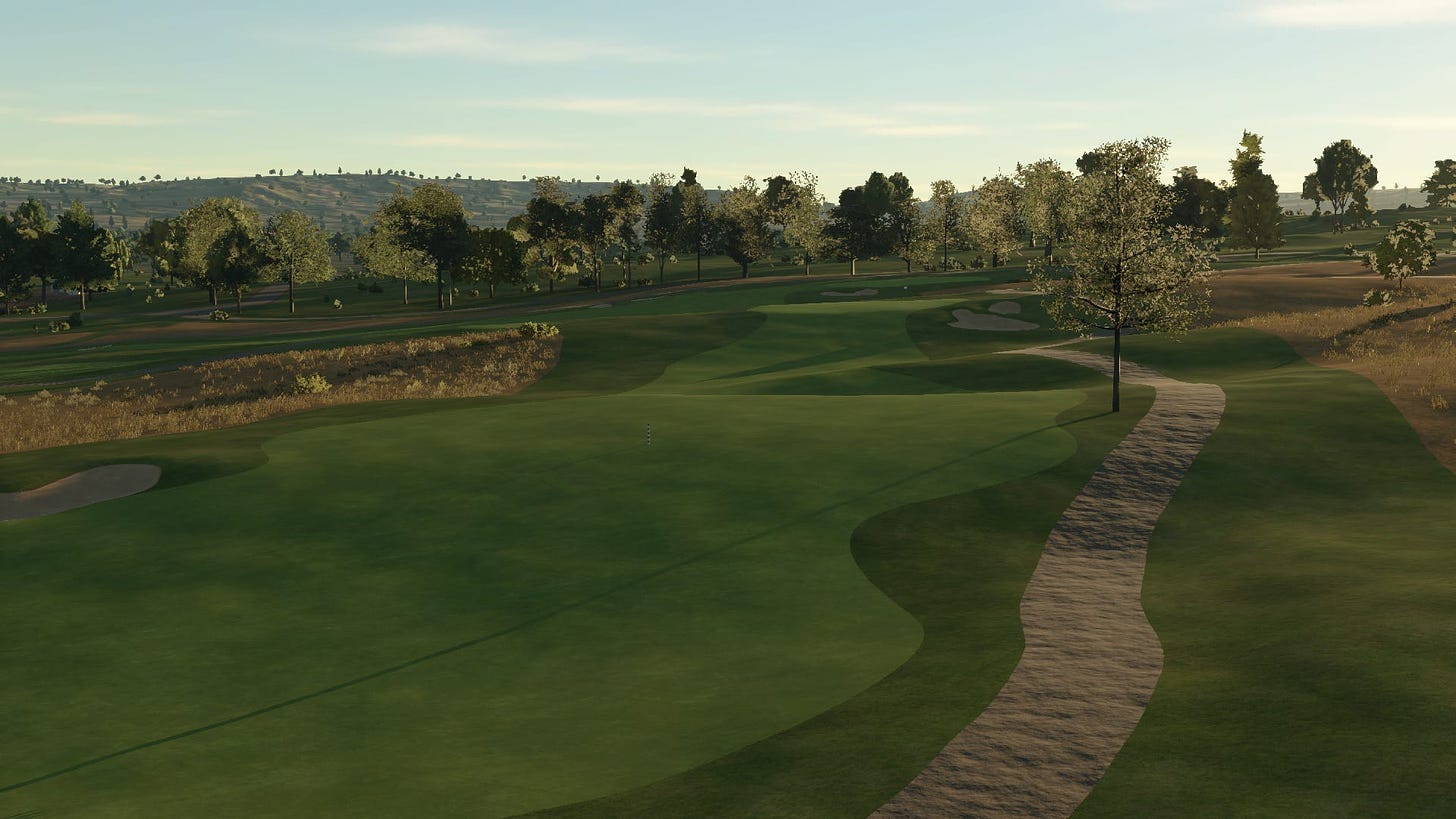
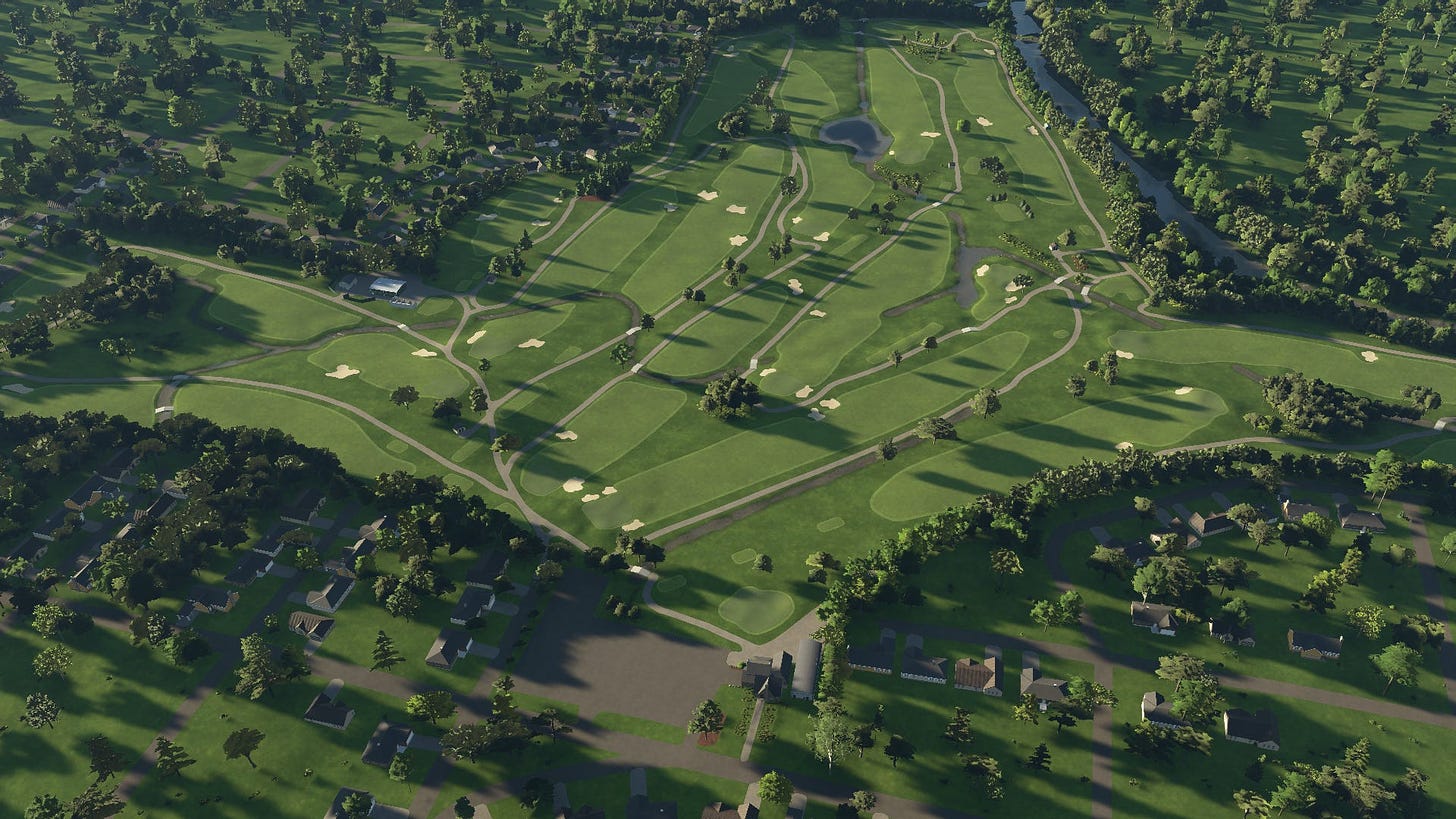
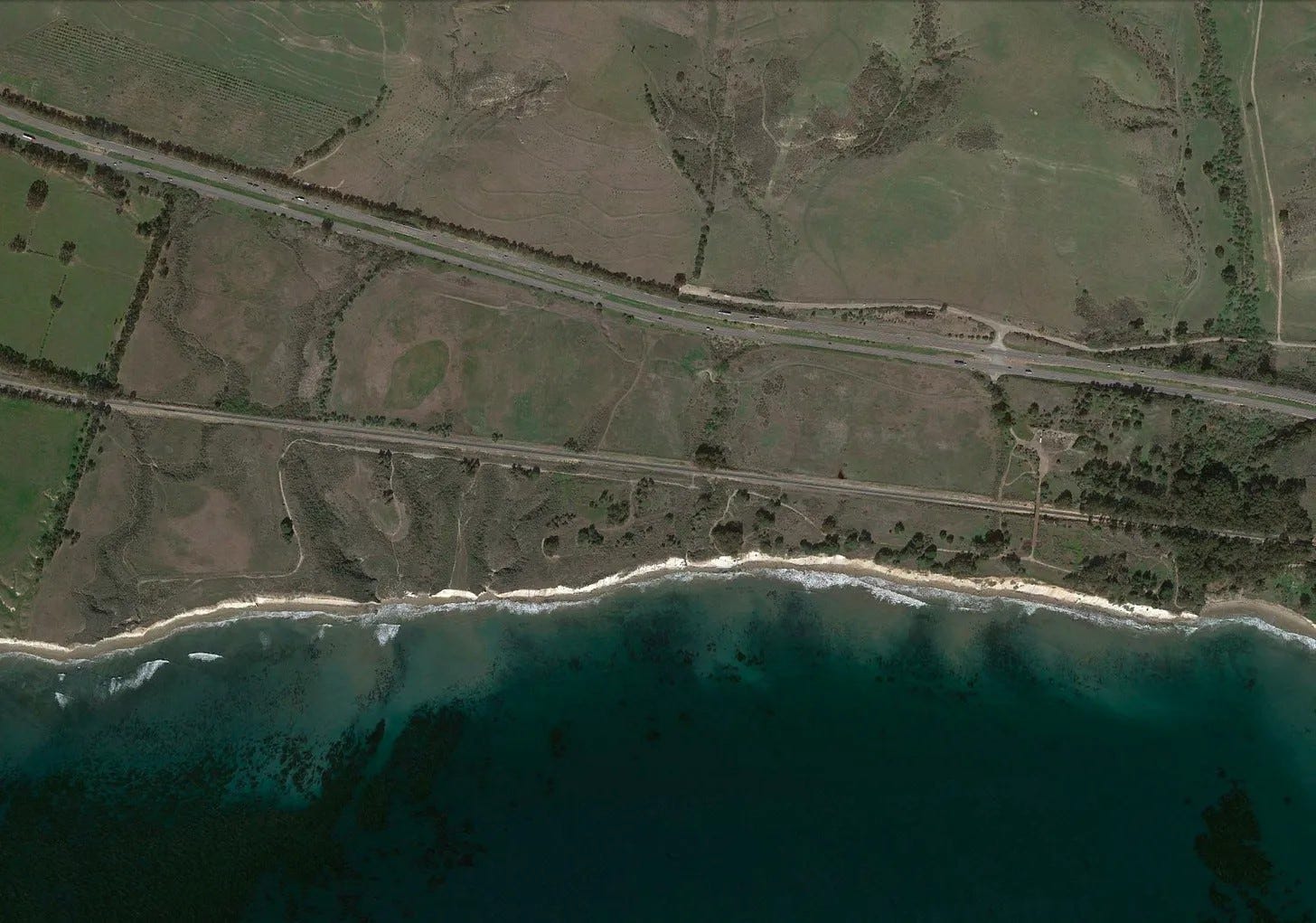
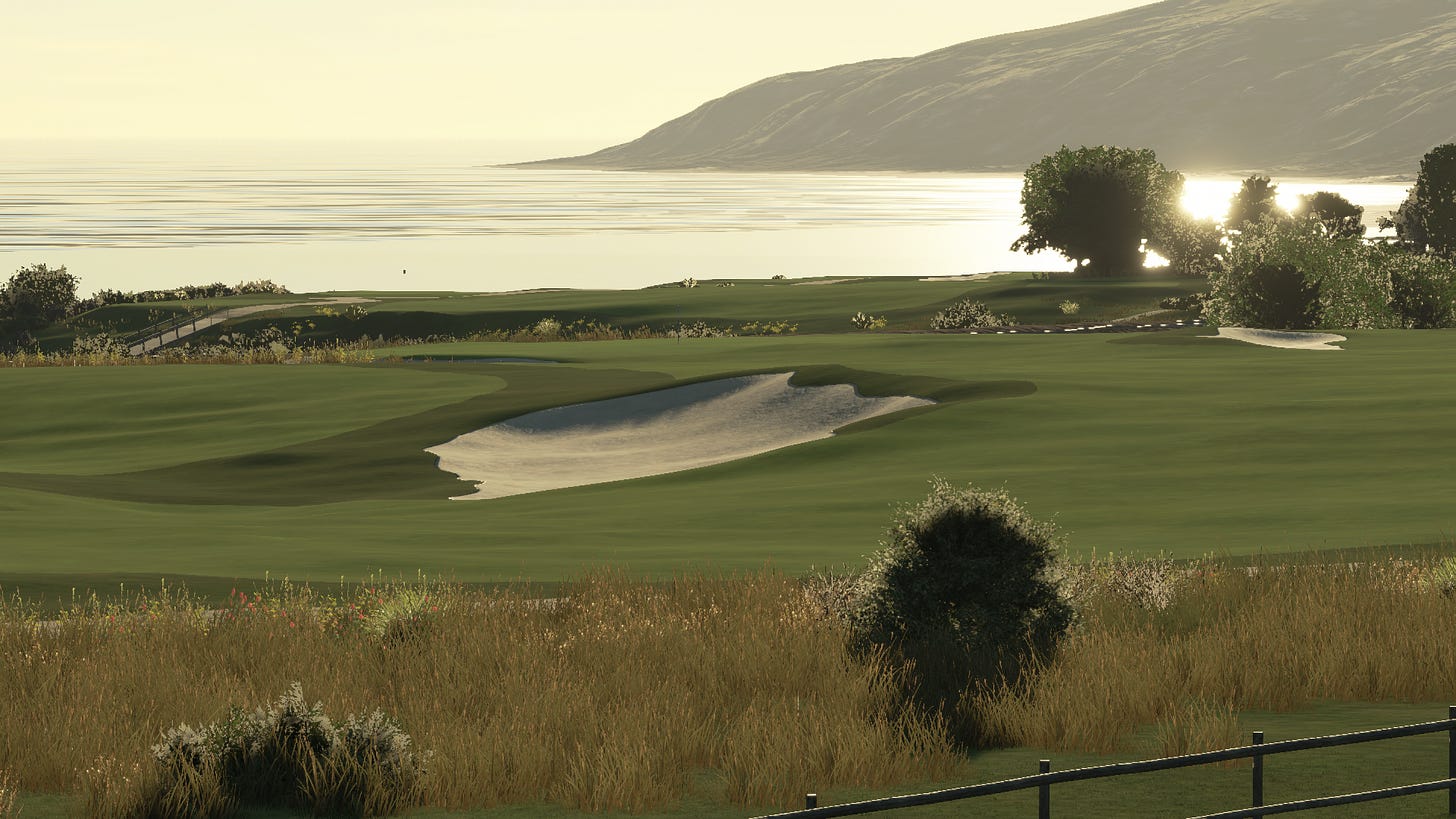
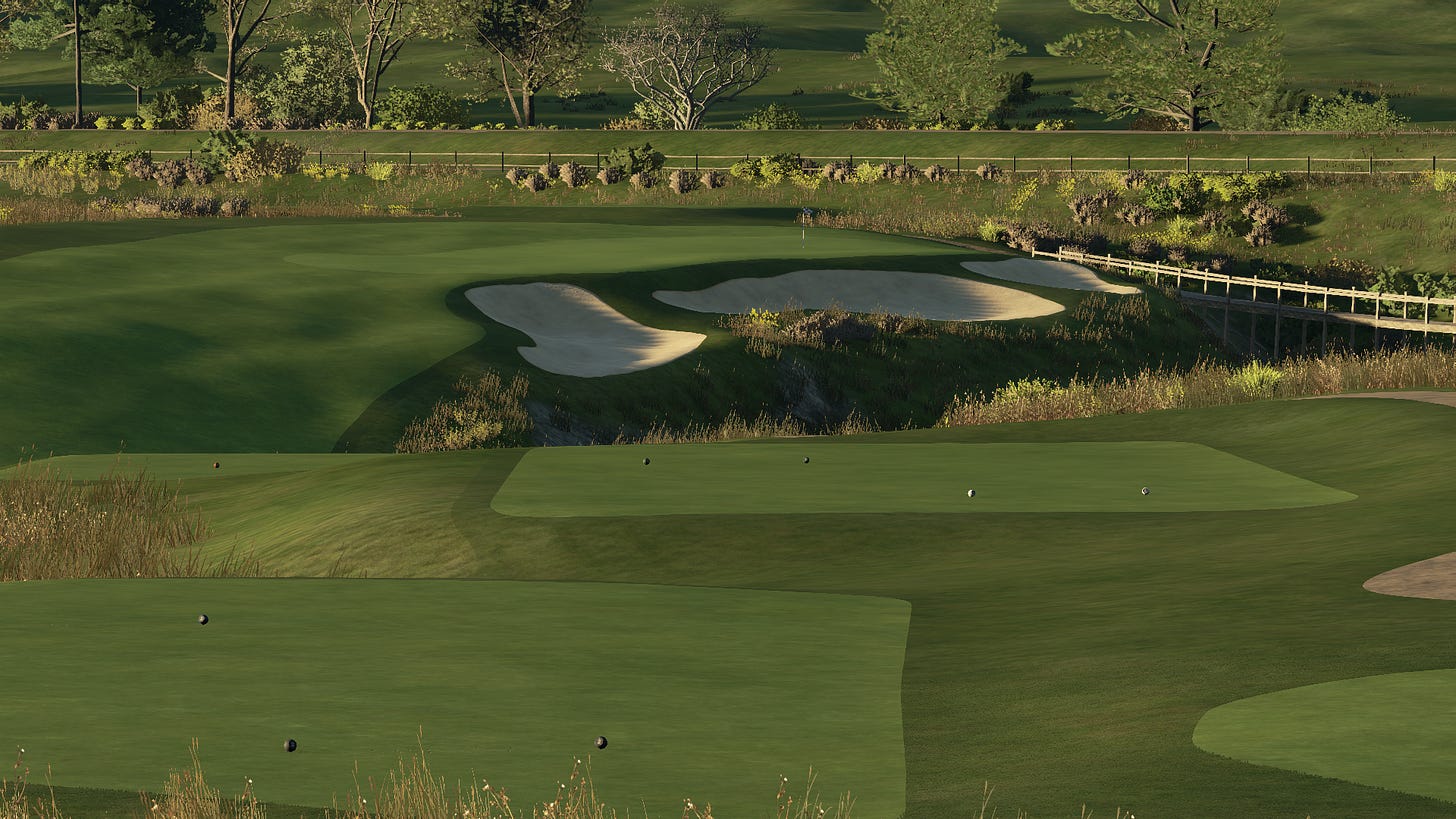
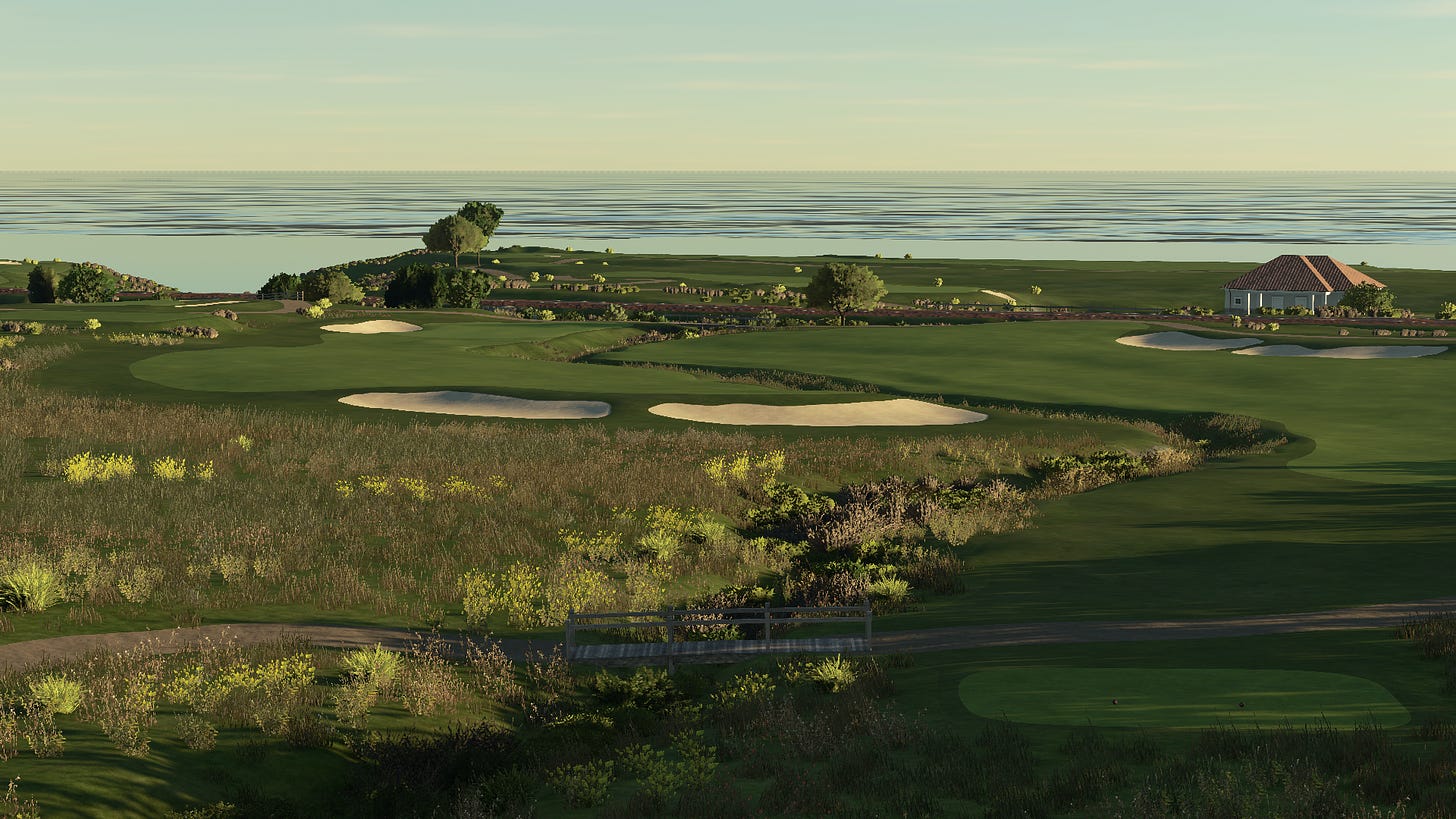
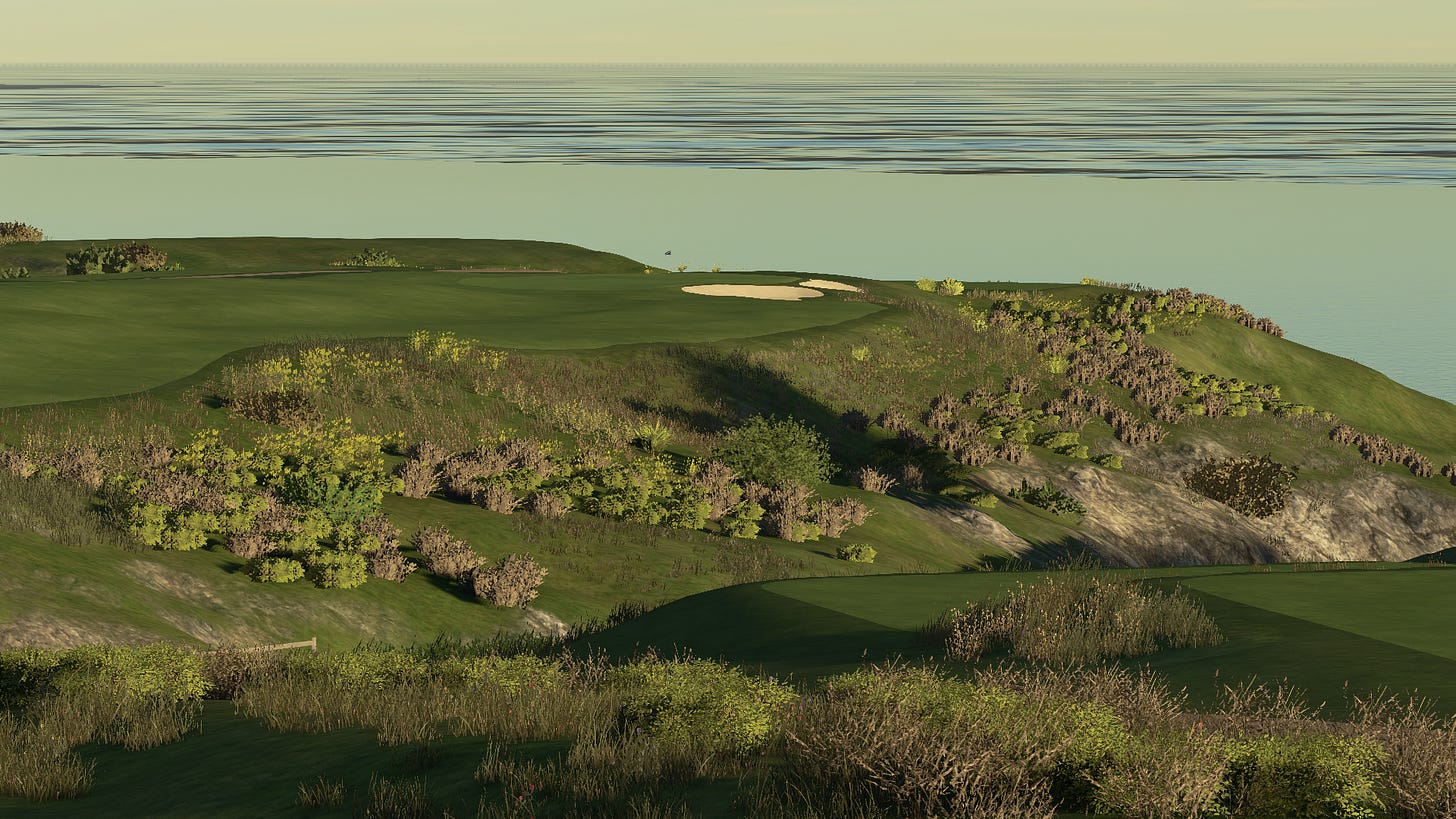
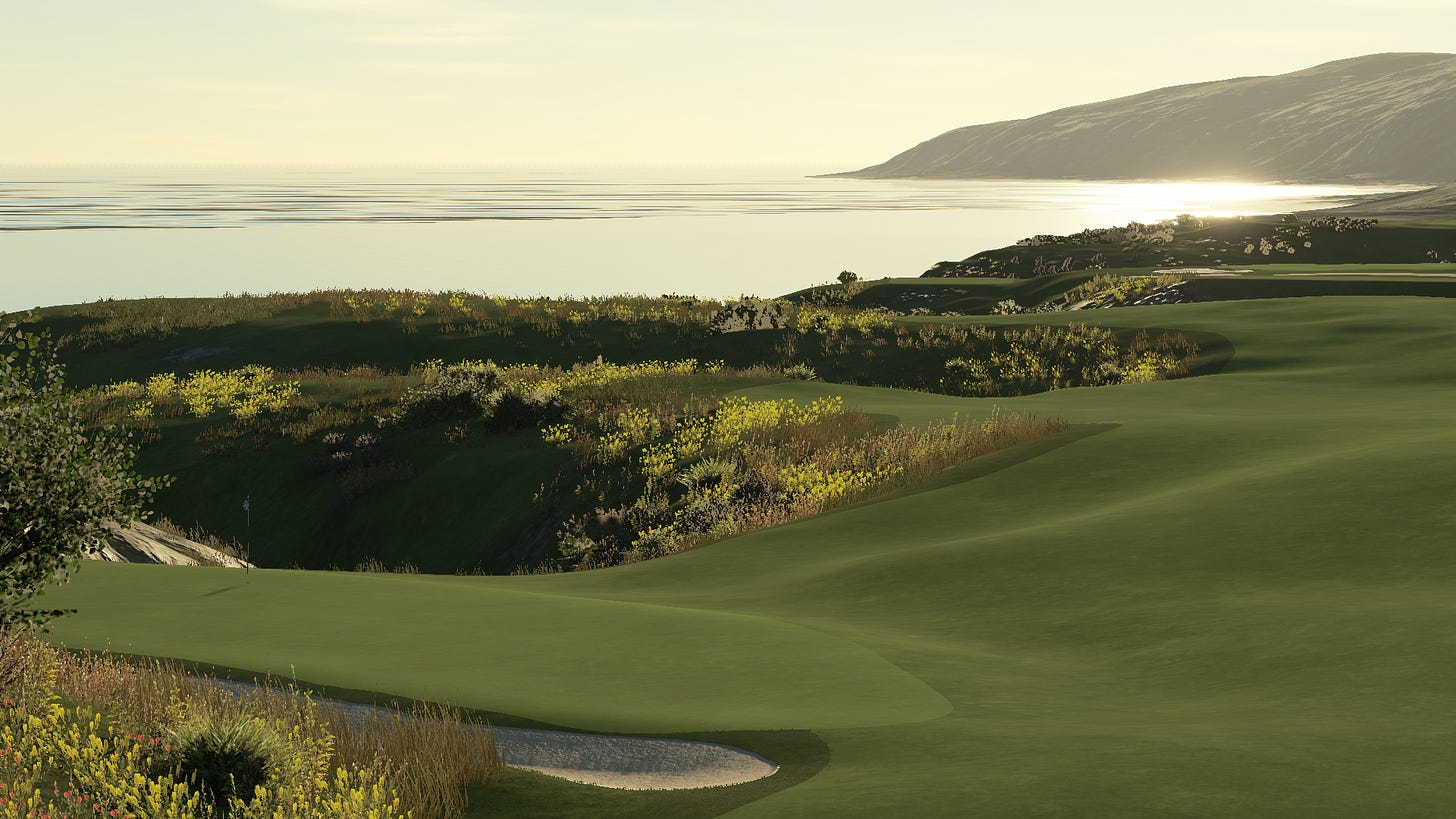
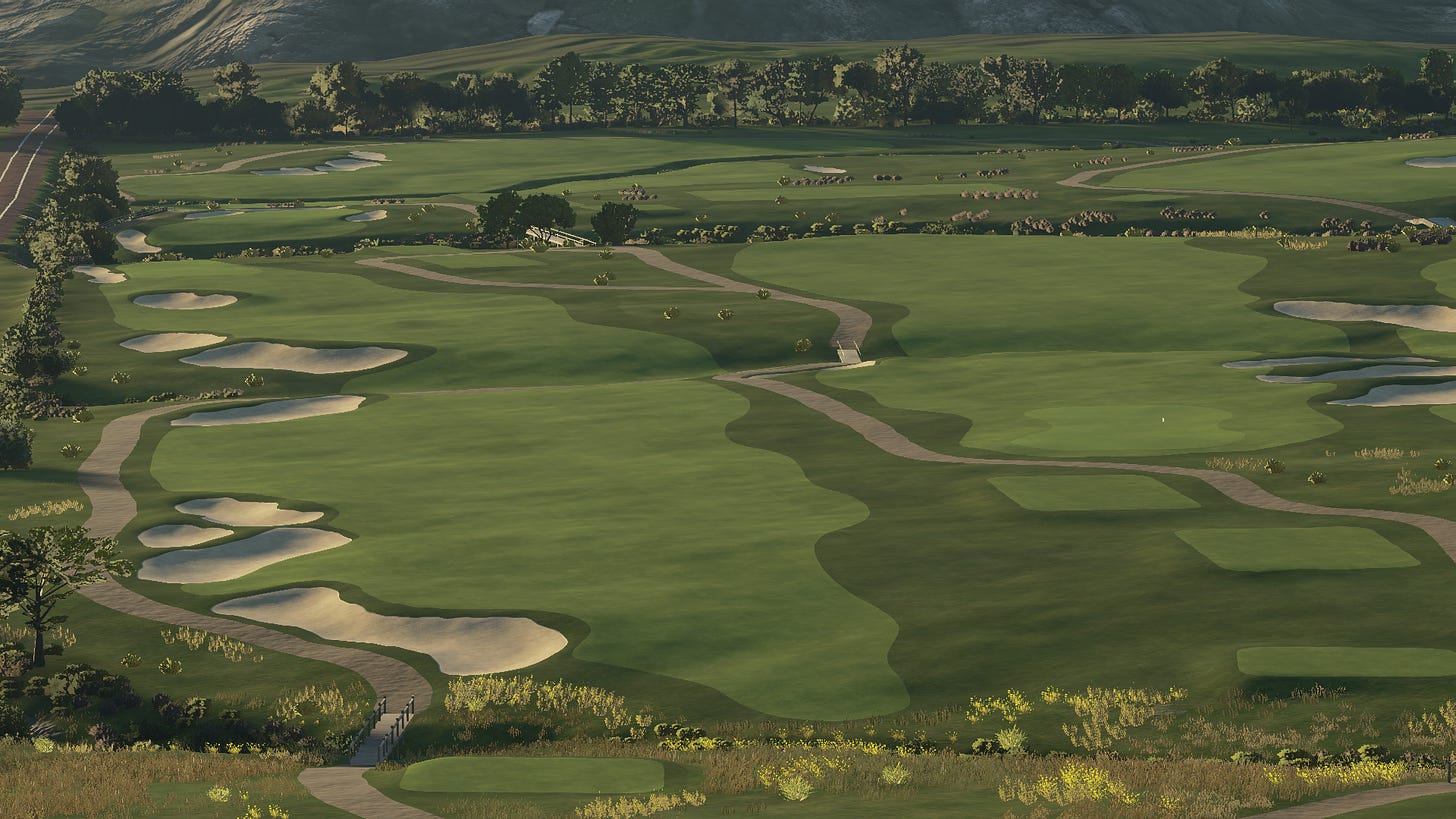
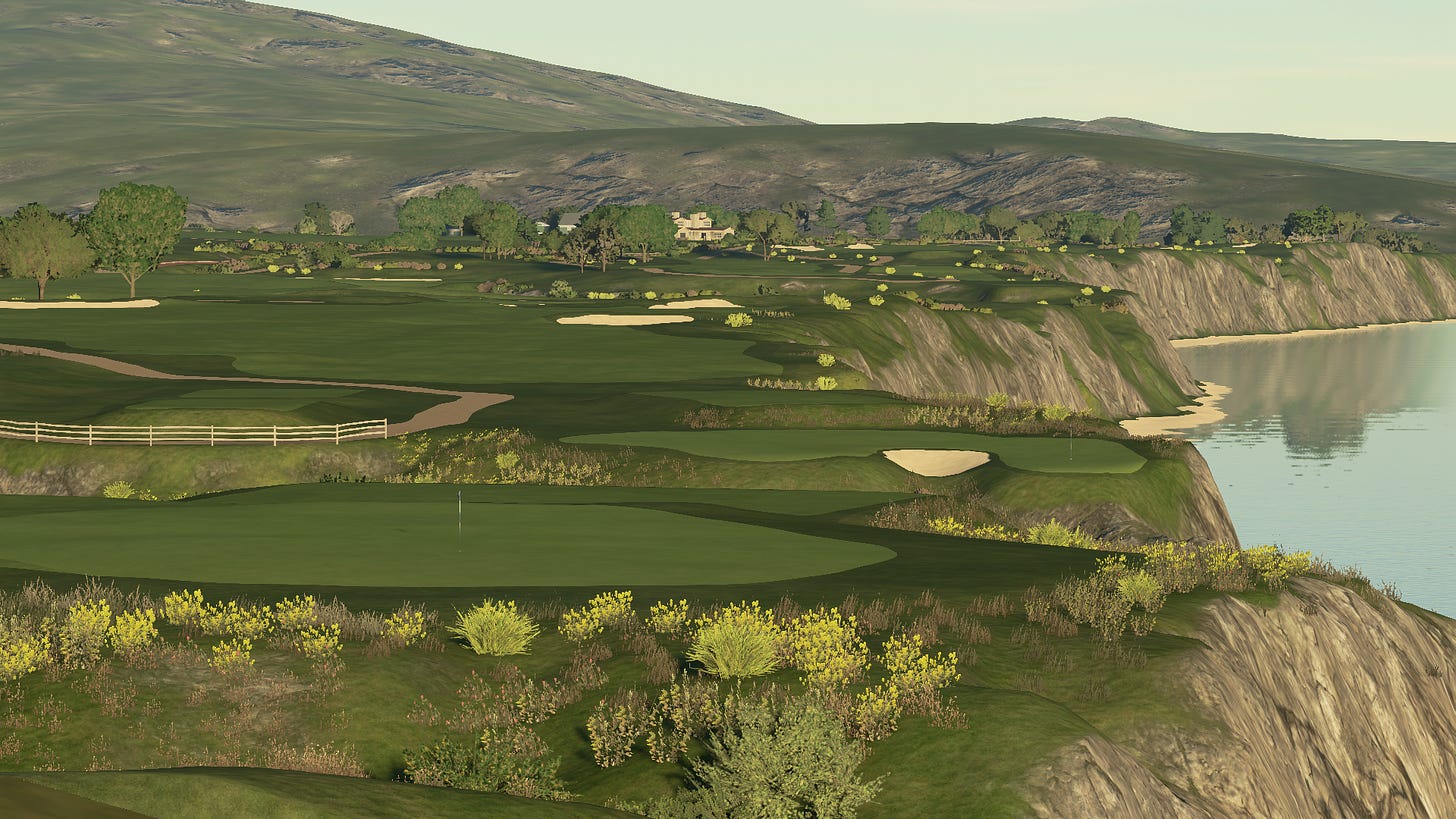
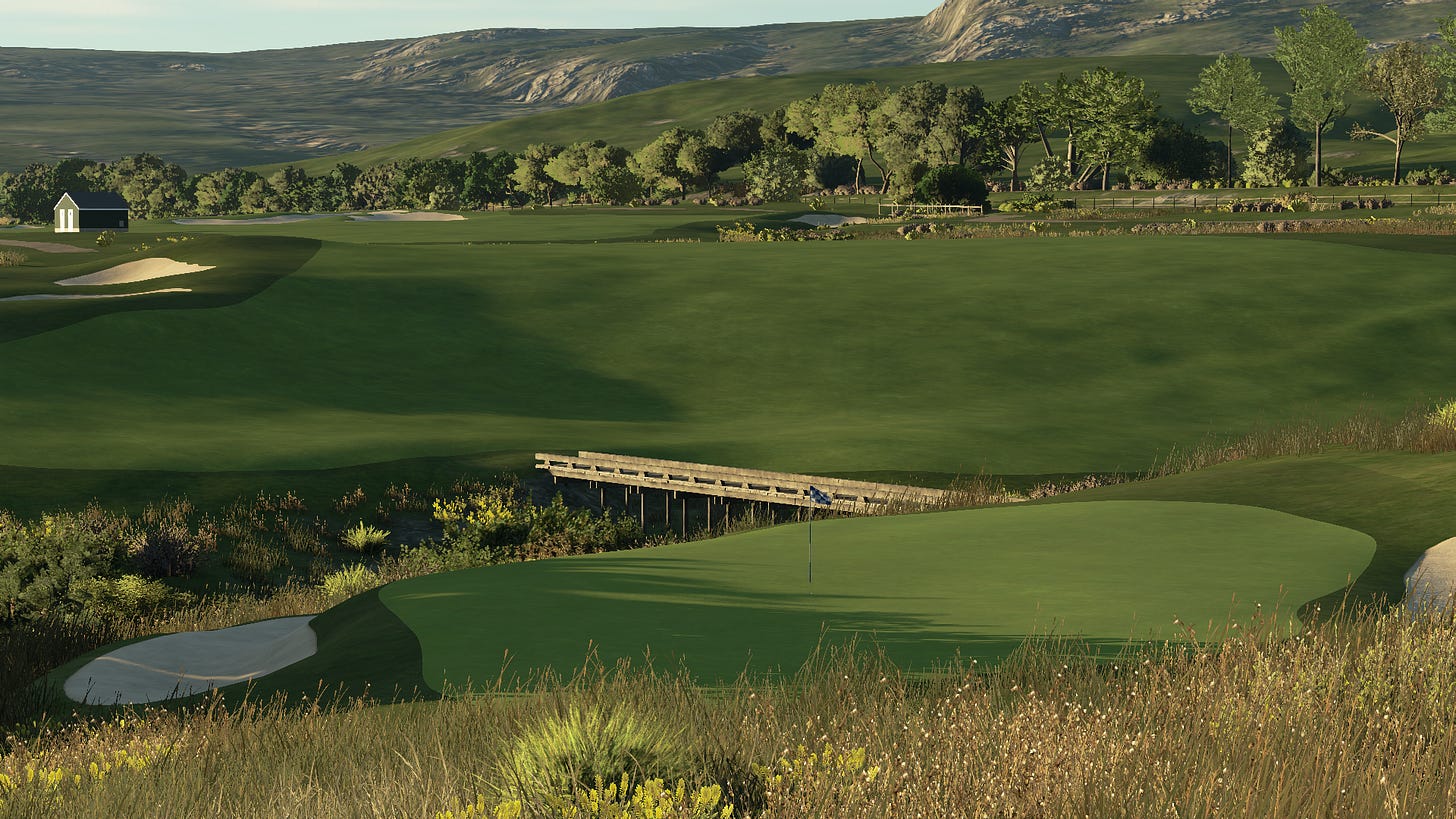
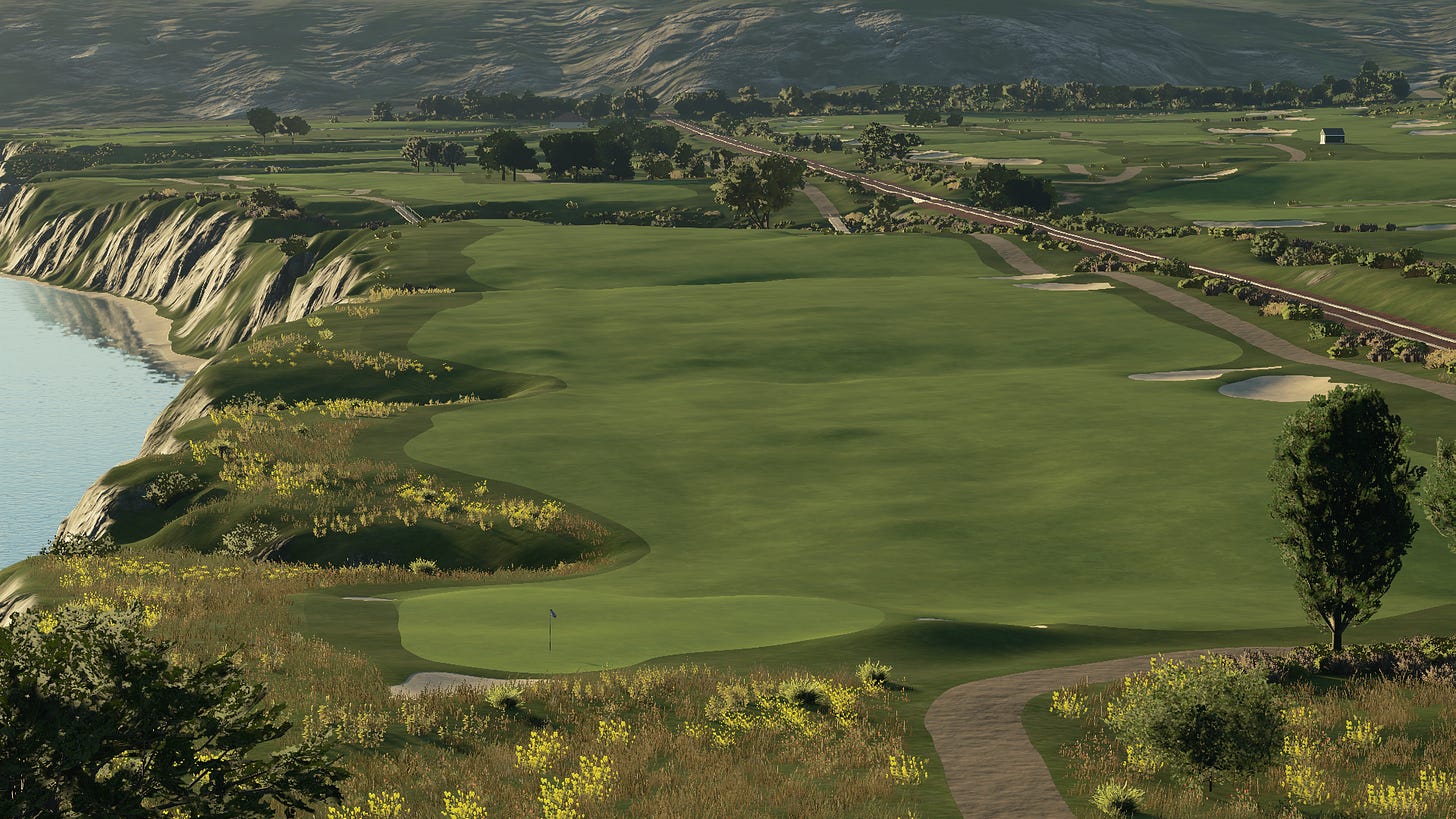
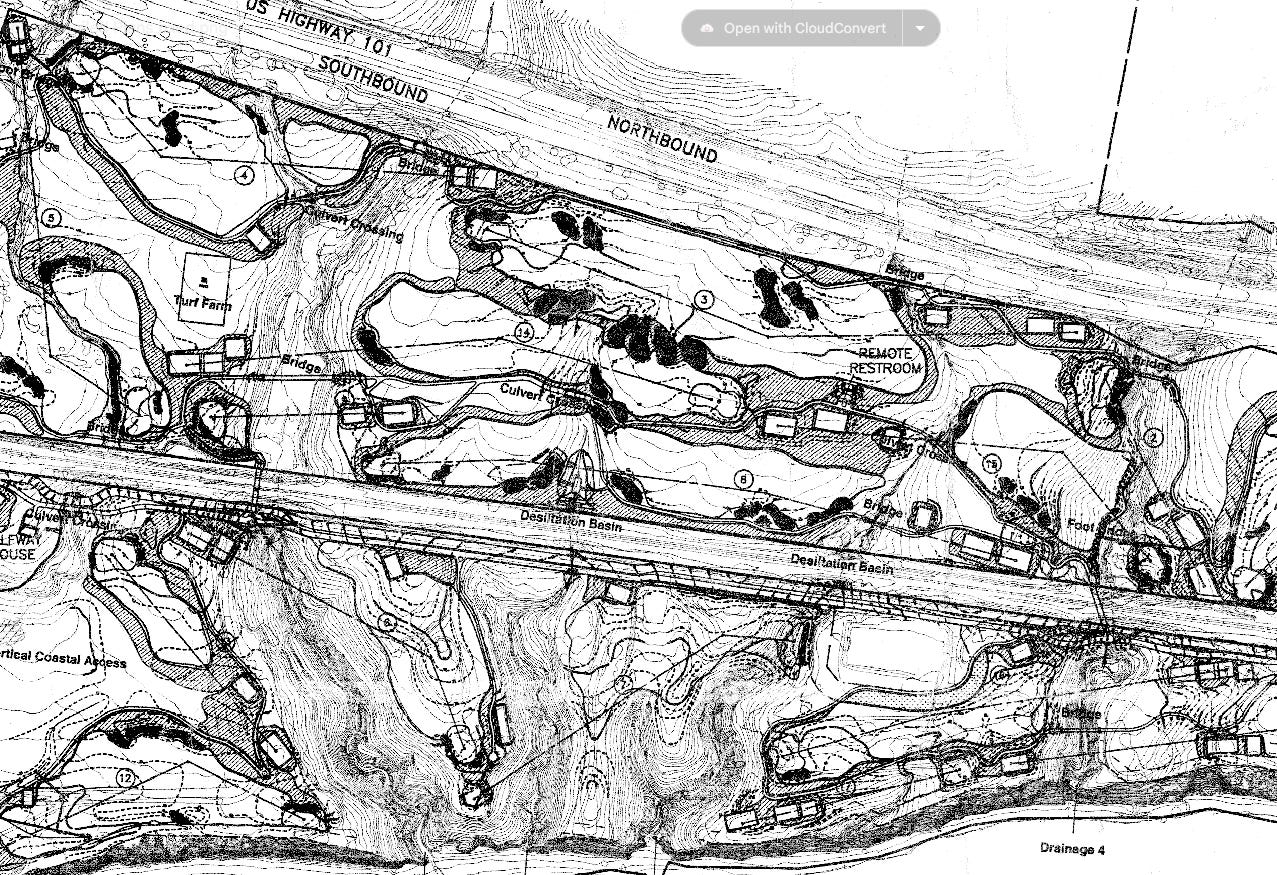
Wow, thanks.
It's a shame that golfers aren't treated like a minority who would greatly benefit from the existence of Dos Pueblos Golf Course. Say that 12% of the population of Southern California, or potentially two million people, would enjoy a major life pleasure from playing Dos Pueblos at least once, so why deny them just because they are a minority?